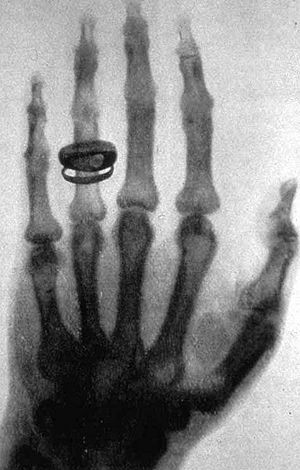Albert von Kölliker facts for kids
Quick facts for kids
Rudolf Albert von Kölliker
|
|
|---|---|
 |
|
| Born |
Rudolf Albert Kölliker
6 July 1817 |
| Died | 2 November 1905 (aged 88) |
| Nationality | Swiss |
| Alma mater | University of Zurich University of Bonn University of Berlin |
| Known for | Contributions to zoology |
| Awards | Copley Medal (1897) Linnean Medal (1902) |
| Scientific career | |
| Fields | Anatomy, physiology |
| Doctoral advisor | Johannes Peter Müller Friedrich Gustav Jakob Henle |
Albert von Kölliker (born Rudolf Albert Kölliker; 6 July 1817 – 2 November 1905) was a famous Swiss scientist. He was an expert in anatomy (the study of body structure), physiology (how the body works), and histology (the study of tiny tissues). He made many important discoveries about how living things are built, especially at a very small, microscopic level.
Biography
Albert Kölliker was born in Zurich, Switzerland. He started his university studies there in 1836. Later, he moved to other famous universities in Germany, like the University of Bonn and the University of Berlin. There, he learned from top scientists like Johannes Peter Müller and Friedrich Gustav Jakob Henle.
He earned his first degree in philosophy in 1841. Then, he got his medical degree in 1842. His first job was helping with anatomy lessons. In 1844, he became a professor at Zurich University. He taught about how bodies work and how different animals are built.
In 1847, the University of Würzburg in Bavaria offered him a job. They wanted him to be a professor of physiology and microscopic anatomy. He accepted and stayed there for the rest of his life. He turned down other job offers because he liked the quiet academic life in Würzburg.
Kölliker wrote many scientific papers, even before he graduated. Many of his early papers were about the structure of different animals. He was especially interested in creatures like Medusae (jellyfish). To study animals, he traveled to the Mediterranean Sea and the coasts of Scotland.
He also helped start and edit an important science magazine called Zeitschrift für Wissenschaftliche Zoologie in 1848. This magazine became one of the most important places for zoology research.
Interestingly, his hand was one of the first to be X-rayed. His friend, Wilhelm Röntgen, who discovered X-rays, took the picture.
Discoveries and Contributions
Kölliker made big contributions to the study of zoology, which is the study of animals. At first, he focused on invertebrates (animals without backbones). His work on how cephalopods (like octopuses and squids) develop, published in 1844, is still considered a classic.
He then started studying vertebrates (animals with backbones). He looked at amphibians and how mammal babies develop inside their mothers (embryos). He was one of the first to use new microscope techniques. These included ways to make tissues firm, cut them into thin slices, and stain them. These methods helped scientists see tiny details. Much of what we know about how embryos develop in the 1800s is thanks to him. His book, Lectures on Development, published in 1861, became a very important guide.
But Kölliker is most famous for his work in histology. This is the study of the tiny structure of animal tissues. In 1847, he showed that smooth muscle (the type of muscle found in organs like your stomach) is made of separate, tiny muscle cells. This was a big step in understanding how our bodies work. Before this, scientists weren't even sure if arteries (blood vessels) had muscle in their walls.
Kölliker studied many different tissues. He looked at smooth muscle, striated muscle (like the muscles you use to move your arms), skin, bone, teeth, blood vessels, and internal organs. He wrote down all his findings in his huge textbook on microscopic anatomy, first published in 1850.
He also noticed tiny structures in muscle cells called granules around 1850. These granules were later named sarcosomes. Today, we know them as mitochondria. Mitochondria are like the "power houses" of the cell. In 1888, Kölliker was also the first to separate these tiny structures from insect muscle cells. He found they had a membrane, which was a key discovery.
Kölliker's work on the nervous system is especially remembered. As early as 1845, he proved that nerve fibers are directly connected to nerve cells. This discovery was super important. It laid the foundation for all future research on how the central nervous system (your brain and spinal cord) works.
He kept working on the nervous system for many years. He studied the complex ways nerve fibers and neurons (nerve cells) are connected in the brain and spinal cord. He quickly saw how useful the new Golgi staining method was for studying the central nervous system. Kölliker greatly helped us understand the brain's inner structure. In 1889, he confirmed the "neuron theory" proposed by Santiago Ramón y Cajal, another famous scientist. This theory states that the nervous system is made of individual cells called neurons.
Honors
Kölliker received many honors for his amazing work. In 1897, he was given the title "von" by Prince Regent Luitpold of Bavaria. This was a special honor. He became a member of many important scientific groups around the world. In England, the Royal Society made him a fellow in 1860. In 1897, they gave him their highest award, the Copley Medal.
A type of lizard, Hyalosaurus koellikeri, was named after him to honor his contributions to zoology.
See Also
- Saltationism


